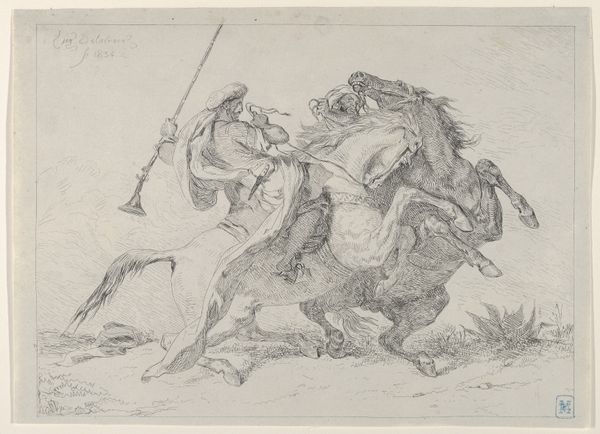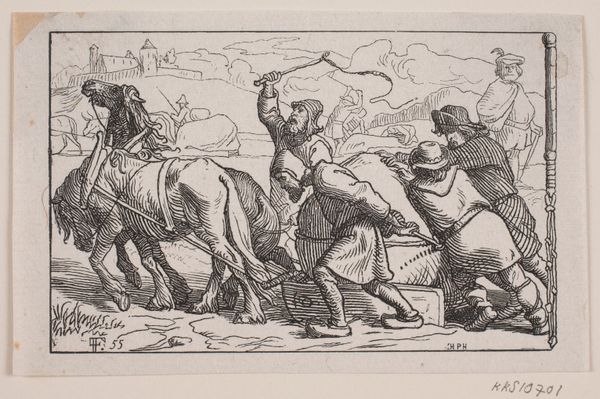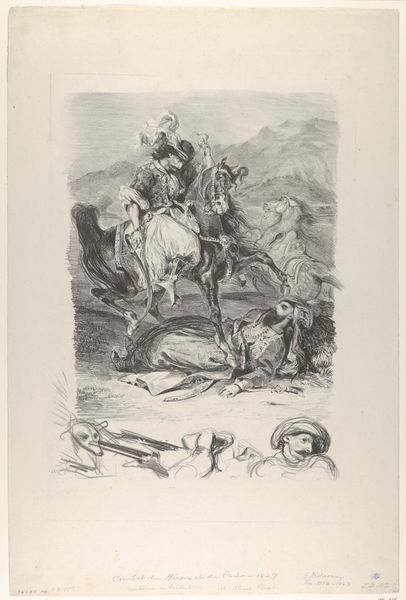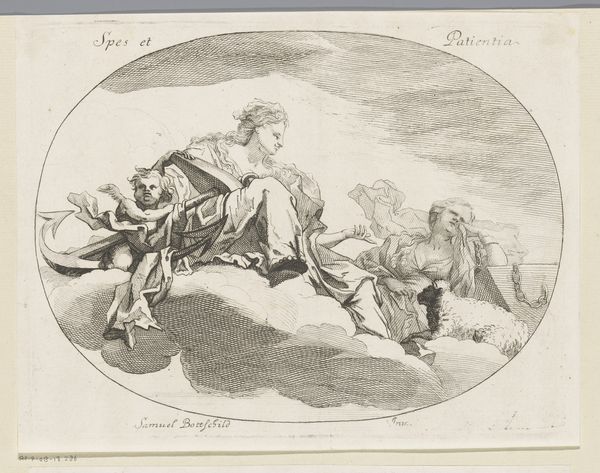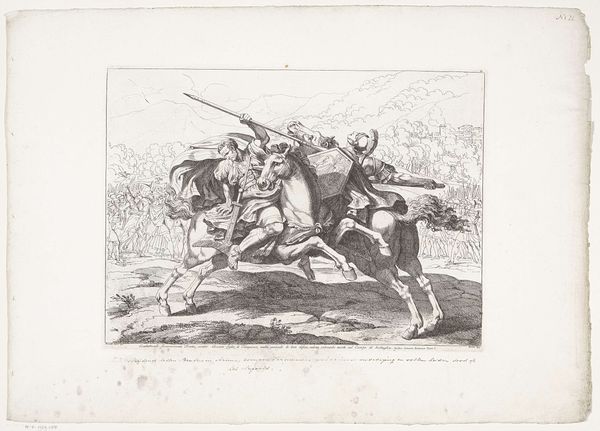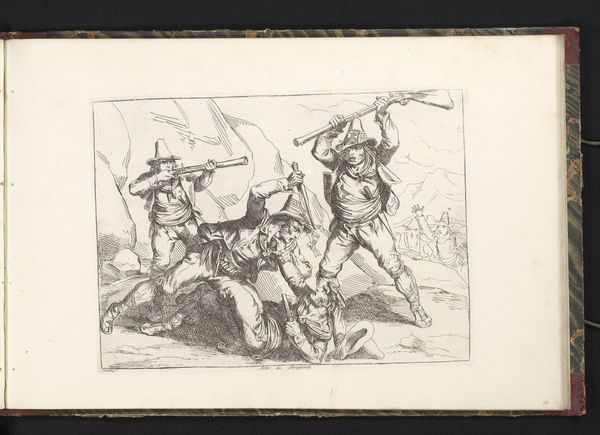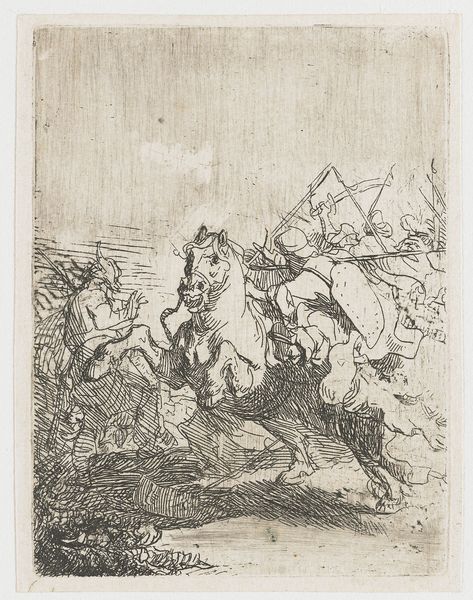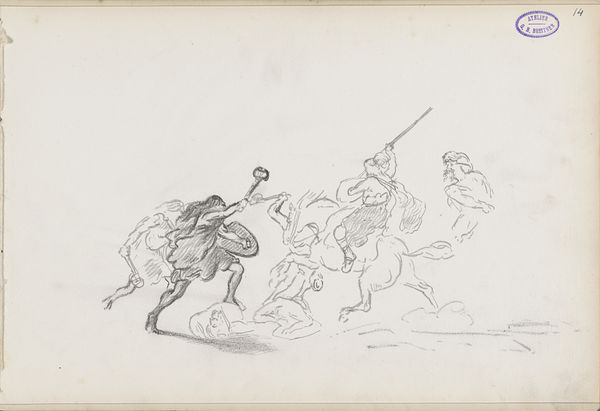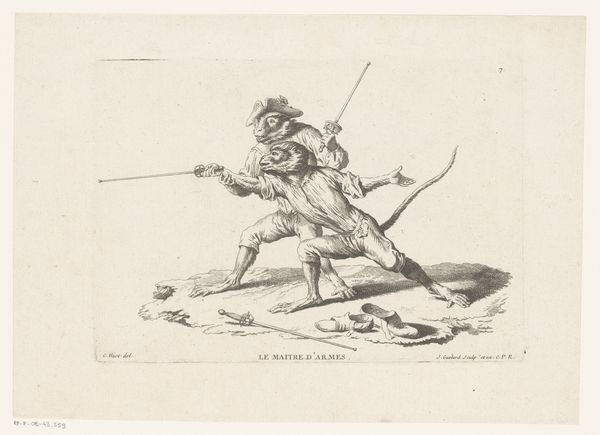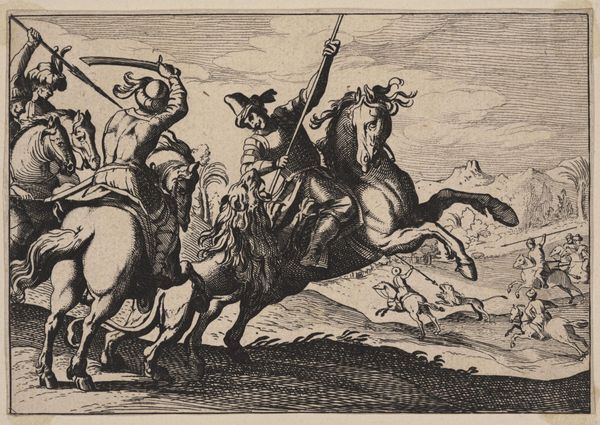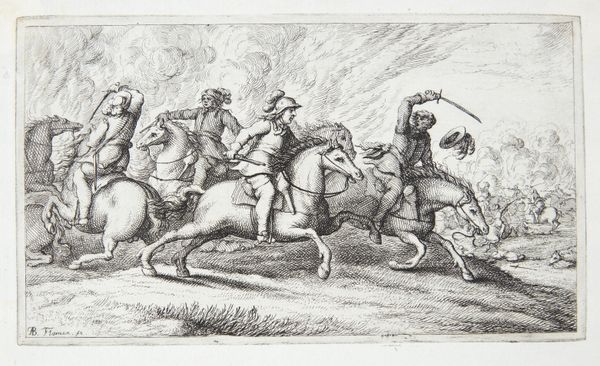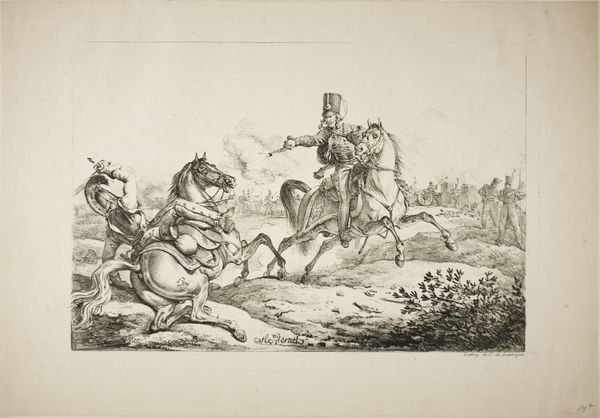
Dimensions: 85 mm (height) x 114 mm (width) (bladmaal)
Curator: This is "Tre valkyrier. Titelvignet til første del, andet afsnit," or "Three Valkyries, Title Vignette for the First Part, Second Section," created around 1852 by Södergren. It’s an ink and woodcut print. Editor: Immediately, I’m struck by the dynamism, that forward-driving energy. It feels almost cinematic, like a still from a film about Norse mythology. The cloudscape below adds a dramatic backdrop to their rapid journey. Curator: Exactly. We can analyze this work within the 19th-century resurgence of interest in Norse mythology and Romanticism. The Valkyries themselves become figures of powerful feminine agency—albeit within a highly patriarchal warrior culture. Editor: The image bristles with spears and arrows, clearly symbolic of warfare, yet the valkyries themselves strike a more complicated chord. Valkyries were choosers of the slain. Consider their historical function, the symbolism of women selecting fallen warriors—do you feel it reflects anxieties or celebrations? Curator: Both, I suspect. It underscores a fascination with death, destiny, and the perceived roles of women, particularly in times of conflict. However, that romanticized ideal of the feminine form, so commonly valorized in European history, almost seems at odds with this trio of war maidens. What does it signify that their agency and power are bound to male warfare and honor? Editor: And yet their power is undeniable. I see parallels here with earlier artistic depictions of mythological beings, where even seemingly benign figures embody potent forces—capable of inflicting blessings or curses depending on their disposition. Consider, for instance, the ancient Greek depictions of fates. The way they seem suspended in that billowing landscape hints to their association to ethereal space. Curator: I agree, the way gender roles are performed and perceived within that Norse framework is fascinating. Here, the female figure becomes this ambivalent emblem of not just strength but divine judgment too. These works offer opportunities to understand a legacy of power relations across culture. Editor: Yes, even within this seemingly simple composition. This has made me look at valkyries with fresh eyes. It pushes me to explore what these figures say about societal constructions of death, honor, and what lies beyond this world. Curator: Indeed. For me, it brings the interplay between historical narrative and artistic expression into sharp focus. It makes me reflect on our understanding of women's historical roles in power structures and how it has shifted and transformed through time.
Comments
No comments
Be the first to comment and join the conversation on the ultimate creative platform.
